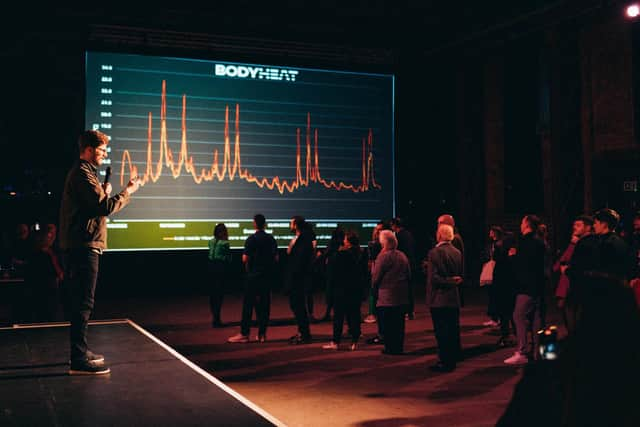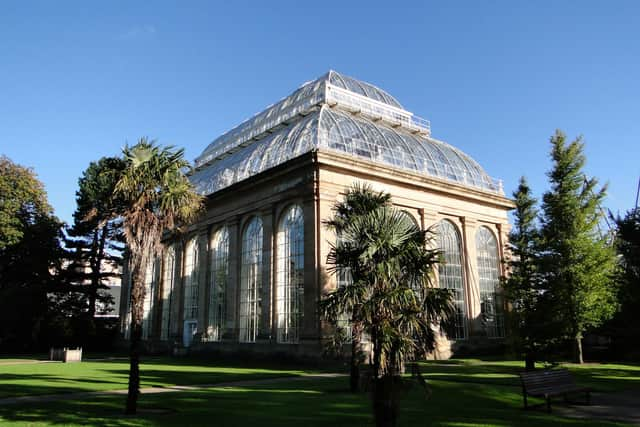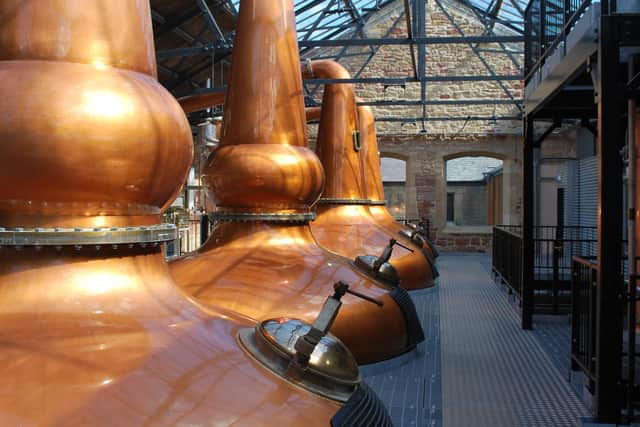How hot dancers tapped for their 'green' body heat are fuelling air-con at Glasgow gig venue SWG3
The warmth generated by hot, sweaty dancers throwing their best moves is being harnessed to provide eco-friendly heating and cooling at SWG3, a popular non-profit arts and events venue in a former warehouse in the city’s trendy west end.
It’s all done with a specially designed network of pipes, water, underground boreholes and heat exchangers, according to engineering consultancy firm Harley Haddow, which created the innovative hi-tech system for SWG3 and its neighbouring Yardworks building.
It brings a new meaning to gig-a-watts.
Advertisement
Hide AdAdvertisement
Hide AdEngineer Danny Ross, associate director at Harley Haddow, specialises in sustainability and net zero.
“If you imagine an architect designs a body, the structural engineers do the bones and we are the heart, the veins and the brains that make everything function within the building,” he said.
The company, which has branches in Glasgow, Edinburgh and Fort William, as well as London and Manchester, has worked on a number of cutting-edge green projects across the nation.


Headliners include Edinburgh Castle, Rosslyn Chapel and the Royal Botanic Garden Edinburgh, as well numerous distilleries – Isle of Raasay, Harris, Kingsbarns, the new Port of Leith vertical distillery and the capital’s Johnnie Walker Experience whisky visitor centre, to name but a few.
The concept of tapping waste energy is a common theme throughout many of Harley Haddow’s projects.
So it was a “no-brainer” when the team was approached to work alongside geothermal energy specialist TownRock Energy on the SWG3 project, according to the engineer.
“The building is large-scale and when entering and exiting it could become cold very quickly, it was poorly lit and previously relied on utilising carbon-intensive fossil fuels for some areas, as well as air-conditioning systems which ejected waste heat or coolth,” he said.


The pioneering BodyHeat system was designed to recycle warmth that would otherwise go up in the air.
Advertisement
Hide AdAdvertisement
Hide Ad“In essence, if you have a dancing body it creates heat and what you tend to have to do is throw cooling in to cool these bodies down,” he said.
“What we have done is put in a system that can recapture that heat with the equivalent cooling.


“We take that and store it beneath the ground in subsurface boreholes, which have water in them.
“Without this you would throw away all that body heat, which can now be used the next morning or the next season or any time you need it.
“We just reverse the operation and pump the heat back in, maximising efficiency.”
The system was created by piecing together existing technologies in a unique way, specifically geared for the needs of the project.
He said: “We designed various heat pumps throughout the venue which were implemented to transport carefully selected carrier fluid through a closed network of pipes to the heat pumps in the energy centre, before going underground to the boreholes to be stored.
“When the heat is ready to be used it travels back through to the heat pumps, where it is upgraded to a suitable temperature and directed back into the event spaces at SWG3.”


Advertisement
Hide AdAdvertisement
Hide AdHe says the innovative scheme has transformed the venue with respect to both comfort and environmental credentials and could inspire others to follow suit.
“What was once a cold and dark cloakroom is now a well-lit and warm area for event-goers, whilst also being more sustainable,” he said.
“Boreholes installed under the community garden retain energy from other areas of the event space, creating a positive impact on the garden as well as benefitting Galvanisers Yard and the other event locations.
“BodyHeat has not only revolutionised SWG3 but has opened the sector’s eyes into a new technology that many will be keen to explore over the coming years.
“It’s also raising awareness of different industries, specifically arts and culture, which aren’t typically at the forefront.”
He is enthusiastic about continuing to innovate as the net zero deadline gets closer.
“We get enquiries about whether you can reuse the heat from a bakery, from people in a gym, from industry,” he said.
“All that kind of chat is rife, but it’s about taking that leap of faith and I suppose trusting the engineering of applications to get to the next level.
“That is what we did at SWG3.
Advertisement
Hide AdAdvertisement
Hide Ad“It is a project to remember, and one we are particularly proud of.
“Bringing sustainability to the communities and spaces around us is essential.
“As they say, the people make Glasgow, but so do the city’s iconic buildings and event spaces.”
Comments
Want to join the conversation? Please or to comment on this article.